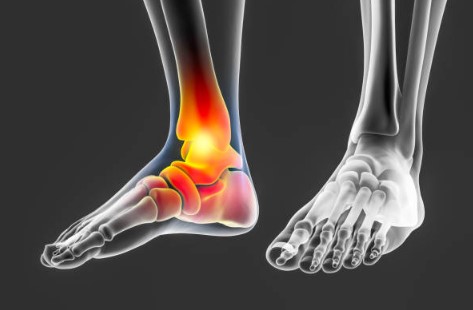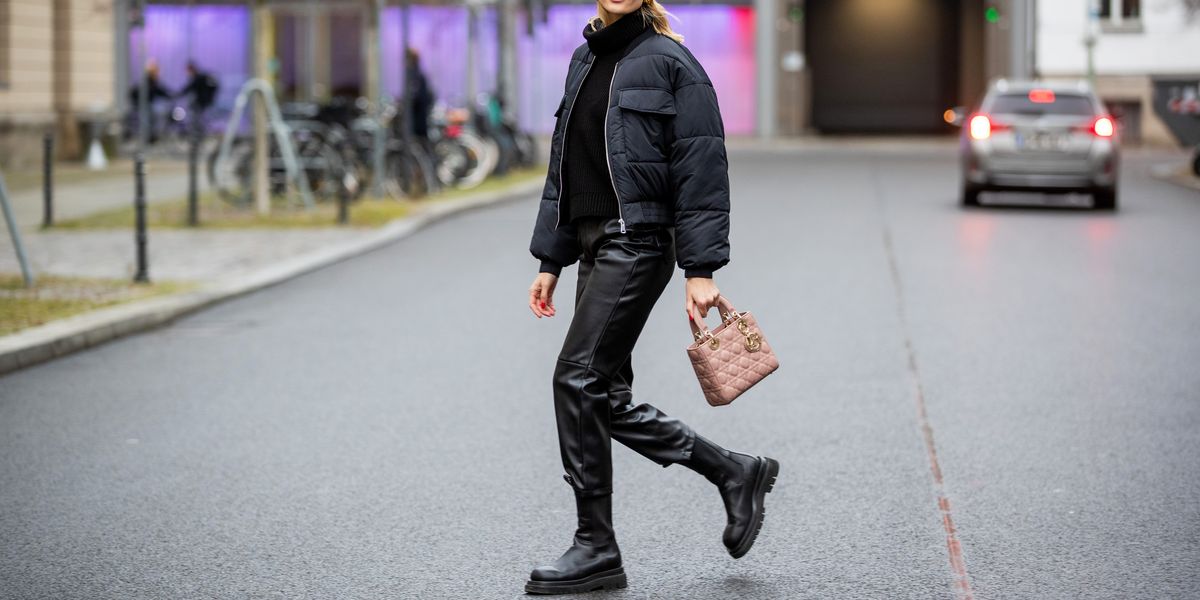Currently, several domestic companies have emerged in the market, positioning themselves as manufacturers of clothing for hunters. However, after visiting the latest exhibition to get an idea of the assortment, I had to acknowledge that answering the question posed in the article’s title is no easier than it was 20 years ago. Imports do come to the rescue – their variety and thoughtful selection are better. However, the prices are prohibitive.
But what about domestic manufacturers? Yes, there is hunting clothing available, but the assortment is very limited: it consists exclusively of suits made from American camouflaged cotton fabrics, with synthetic insulation, water-repellent treatment on the upper part, and Gore-Tex-like membrane inserts. It’s excellent clothing, but all the materials are imported, making it unaffordable despite being domestically produced. Such clothing is suitable for a narrow range of applications – it’s perfect for hunting in the Volga Delta in early November or for spring hunting with decoys or circular duck hunting. It can also be used for winter ambush hunting.
However, this type of suit is unsuitable for active hunting. Within half an hour of walking uphill or through a swamp, you will get soaked because no membrane with moisture-wicking properties can cope with intense movement.
Clothing for Active Hunting – Hunting Jackets and Hunting Pants
Clothing for active hunting should be durable, lightweight, soft, and thin. It should have a design that does not restrict movement and does not hinder shooting. At the same time, the fabric must retain warmth, be windproof, but allow air circulation and quickly evaporate the body’s moisture. The properties of the fabric should not change in damp or freezing conditions. The design of the suit should allow for adjustable ventilation or, conversely, heat conservation by opening or closing the jacket, wristbands, trouser bottoms, and possibly additional ventilation “windows.”
Regarding camouflage, let me try to explain my “heresy.” Firstly, during active hunting, you often have to make game birds take off rather than hide from them. For example, when hunting with a hound, spaniel, pointer, or a chain of beaters. In the latter case, just like in any collective driven hunt, it is advisable to wear a signal orange vest (which, by the way, is also not available in stores). Camouflage is ineffective when hunting such game because birds or hares sitting on the ground can spot the hunter against the bright sky, and no leaf or stem pattern on a human silhouette will hide them.
Secondly, a camouflage pattern is effective only against a specific background, and during active hunting, the background constantly changes. The hunter may be walking across a gray fallow field, then a yellow stubble field, then through an emerald meadow on the mowing, and then plunging into a brown mass of uncut grass. A branded “oak” camouflage pattern will actually make you more visible against withered reeds than a simple faded tent fabric. When it’s necessary to conceal oneself, one must learn to use the surrounding vegetation by adding a few clumps of grass and branches to the suit to change the silhouette and blend it with the terrain. This is more reliable, and the clothing and headgear should have places for attachment.
Regarding camouflage patterns, it is more rational to get a ghillie suit tailored for a specific season and the location where you typically set up your hide. It will be significantly cheaper than a branded camouflage suit and will last much longer since you wear it over your clothes only during the hide and remove it immediately after the hunt.
One should also remember that birds and animals primarily react to movement, not color. A hare can literally jump under the feet of a motionless hunter dressed in neutral-colored clothing standing against a bush, but it will evade a moving hunter, even if they are wearing a perfectly matched camouflage for the conditions.
Another essential detail: birds and animals with night vision are sensitive to the invisible ultraviolet part of the spectrum. Thus, it is more critical for the fabric surface not to reflect ultraviolet rays, not to have a tendency to shine, even when wet. Camouflage fabrics are exclusively made from cotton or synthetic materials. Washing them with detergents containing optical brighteners, color enhancers, and… ultraviolet reflectors can make the hunter visible as a traffic light with a red signal.
Therefore, materials with a matte, velvety surface that tend to absorb and disperse light rather than reflect it are much more advantageous for hunters. Such materials include velveteen, velvet, suede, flannel, woolen cloth, and felt. There are no camouflage patterns for such fabrics anywhere in the world. Traditional hunting suits from reputable manufacturers, like Kettner, for example, are always in protective colors but without camouflage patterns. There is an aesthetic aspect to this as well: camouflage carries the mark of “military” style.
When going on a hunt, we use trains, airplanes, visit crowded places, and camouflage immediately attracts attention and becomes a target for suspicion, while khaki-colored clothing remains neutral and elegant.
Summer
At the beginning of the summer season, there is no alternative to cotton fabric. Wool creates discomfort at temperatures above 20 degrees Celsius. Velveteen or cotton flannel in protective colors work well. The cost of these fabrics is low, but unfortunately, no domestic manufacturer produces hunting suits from them.
So, the absolute majority of hunters will continue to wear comfortably tailored army camouflage for a long time, disregarding significantly more expensive but ultimately not providing any advantage suits made from American camouflage cotton fabrics. Those who want to avoid the “military” style have to search for their gear at the clothing market, where khaki-colored summer clothes are currently in fashion.
Hunting clothing should not give away the hunter’s presence, so it must have a protective coloration and not rustle, rattle, or shine, even when wet.
Is Camouflage Necessary?
In recent years, everyone has become obsessed with camouflage, but it is not necessarily essential. As I understood from conversations at the stands of domestic manufacturers, they consider camouflage to be the main feature and advantage of hunting clothing. They say, “If you don’t need camouflage, you can buy everything you need at a regular ready-to-wear store.”
Unfortunately, I cannot agree! Clothing that meets the requirements stated above is not available in a regular store.
And one more observation: in areas infested with ticks carrying encephalitis, besides mandatory vaccinations, it is recommended to wear a special suit, but I have never seen it in hunting stores.
Autumn
When the weather starts to cool down and the sun weakens, cotton fabrics can easily be replaced by semi-woolen or woolen diagonal trousers and a jacket. All fasteners should be covered with flaps to prevent rabbits from getting in. It is advisable to reinforce the knees of the trousers. The bottom of the trousers should be fastened or tightened with a drawstring (but not elastic!) to allow them to be worn either tucked into boots or over tall boots, tightening them on top. If you step into a water-filled hole, the water won’t enter the boots, but will flow off the trousers and not inside them.
From the end of September, there is no better upper garment than a jacket made of protective-colored cloth. In the past, tailors used to remake such jackets from army greatcoats. It is made without lining, in a single layer, and without corsets to avoid stiffness. The length should be to the middle of the thigh, so you can sit on the edge of the jacket, not on the trousers. The cut should be loose with straight sleeves. Avoid unnecessary stitching and patch details as they make the cloth rigid.
The jacket should have a reliable pocket for documents, a pair of spacious side slit pockets with flaps to keep out rain and debris, and traditionally, two slanting pockets on the abdomen to warm the hands. The jacket is made single-breasted, fastening up to the chin with hooks. If it has buttons, or preferably a two-way zipper, they should be covered with flaps. If you make cuffs, they should be unfastenable, not elastic. A hood is unnecessary. This detail is only suitable for special anti-tick clothing.
The cloth treated with a water-repellent impregnation is almost waterproof. You can walk in it for hours in the autumn rain and stay dry; water does not soak the wool fibers but rolls off them. Only heavy rain with large drops can penetrate such clothing, but even if it gets thoroughly wet, it continues to provide warmth, allows air to circulate to the body, and evacuates evaporated moisture. The unlined cloth dries quickly.
At the beginning of winter, you can add trousers made of the same material to the jacket. With modern hunting thermal underwear and a fleece jacket worn underneath, such a suit allows for active hunting even in harsh frosts.
I wore such a jacket made from an officer’s greatcoat throughout the 1980s, spending October-November annually in the forests of Arkhangelsk and Karelia. Now I’m wearing the second one, though not domestic but from Kettner, made of traditional alpine Loden wool. It is lighter and softer than the greatcoat cloth, but its essence is the same. I have tried other options and firmly believe that the only worthy replacement for this item in my autumn-winter hunting wardrobe would be another jacket of the same kind.
It should be noted that synthetic fabrics have emerged, which, possessing similar properties to cloth, surpass it in the majority of parameters. These are fleece and Polartec. Clothing made from these materials is very lightweight, comfortable, and does not cause irritation even when worn on bare skin.
They actively wick moisture away from the body, retain heat very well, and do not let the wind through. They provide comfort over a wider range of temperatures: when you are already freezing in wool, a fleece sweater keeps you warm. And in the same fleece sweater, you don’t feel uncomfortable when you start sweating in a woolen sweater. Fleece and Polartec do not get wet, and even if they do, they still retain warmth, allow air circulation, and dry quickly. Soft to the touch, these materials are durable and highly resistant to wear and tear.
But one significant factor limits the application of fleece and Polartec suits: any spark can create a hole in them. A bunch of sparks thrown from a fire towards you by a gust of wind can turn your wonderful jacket into a sieve. Therefore, alas, this clothing is suitable for hunting only on weekends when you don’t plan to sleep or cook by the fire.
For outdoor conditions, there is still no alternative to natural wool fabrics, especially cloth.
Raincoat
During summer and early autumn, it is impossible to wear cloth clothing, and cotton won’t protect you from the rain. I always carry a disposable plastic raincoat in my pocket or hunting bag just in case. It costs next to nothing, weighs almost nothing, and takes up as much space as a handkerchief. However, it provides 100% protection from rain. But you can’t walk in it for long—moisture evaporated from your body condenses inside, and soon you will inevitably get wet, especially while walking, due to your own sweat and moisture. Therefore, it’s only a backup option for unexpected and short rain. In cases when you go hunting in anticipated rainy weather, you need a more reliable solution.
This problem is beautifully solved by imported jackets with membranes, but these items are expensive. If you have the money, it’s worth it as you won’t find a better option.
Unfortunately, domestic raincoats either leak or, when rubberized, become completely airtight. Raincoats made from Lavsan and other domestic synthetics are not much different from rubber in terms of hygiene, but they provide poor protection from the rain, especially as they age. Once a Lavsan raincoat wears out a bit, it starts leaking.
Storm jackets made from tent fabric are hygienic but do not offer any protection from rain—efforts to treat them with water-repellent substances are in vain. Jackets made from tarpaulin are slightly better, but they also leak, especially when they are worn out, and have an unpleasant tendency to become stiff from moisture and make noise like plywood when branches hit them.
That exhausts all the options available for purchase. Unfortunately, our manufacturers are fixated on synthetics and do not turn to traditional materials for raincoats. And they are mistaken—Western manufacturers, despite having high-quality synthetics and membranes, still don’t abandon time-tested solutions. Rainwear made of densely impregnated “waxed” poplin continues to enjoy steady demand.
Several companies specialize in such hunting clothing, and they thrive. Domestic manufacturers, as I understand it, believe that its popularity in Europe is due to tradition. And they are wrong. Steady demand in the presence of choice is evidence of efficiency—nobody wants to get wet just for the sake of tradition.
I wore such a raincoat for ten years and can confirm that if you treat it annually with the hot compound sold with it, similar to how Gutalin is used for shoes, it provides more reliable protection from rain than rubberized fabric, let alone synthetics. Moreover, it breathes, allowing air and moisture to pass through—condensation does not form on the inside of such a coat. I have picked mushrooms in warm summer weather under the rain for 4-5 hours while wearing only one shirt underneath the raincoat, and I remained dry.
The “waxed” raincoat has another important advantage for a hunter: raindrops do not smear but roll off it, so it does not shine, whereas domestic raincoats made of synthetic fabric with a camouflage pattern shine both when dry and wet, giving away the presence of rabbits.















